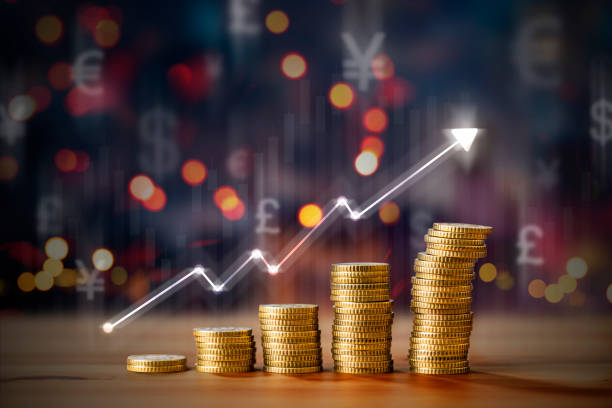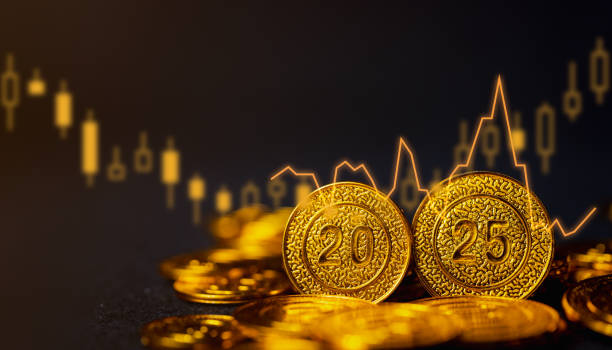As we look ahead to 2025, understanding how gold prices are expected to shift is crucial for sellers in India. Gold has always been more than just a commodity; it holds cultural significance and serves as a reliable investment for many. With various economic factors at play, sellers must be prepared to navigate the changing landscape of the gold market to make informed decisions and maximize their returns. Gold has always been more than just an investment in India. As a culturally significant asset passed down through generations and valued as a financial safe haven, gold plays a unique role in Indian households. With 2025 approaching, understanding how gold prices are likely to change can be valuable for anyone considering selling their gold. Economic trends, global events, and domestic factors will all play a role in shaping gold’s value in India, potentially creating ideal moments for sellers to act.
In this article, we’ll dive into the expected market shifts, why they matter, and how you can maximize your returns by selling your gold at the right time.
1. Reflecting on Recent Trends in India’s Gold Market
Before predicting 2025’s gold market, it’s useful to consider recent years’ trends. In India, gold prices have experienced notable fluctuations driven by global and domestic factors. During the COVID-19 pandemic, economic uncertainty led to a surge in gold prices as investors sought safe-haven assets, a trend mirrored worldwide. Following the initial spike, 2023 and 2024 have seen relatively stable gold prices, although with occasional peaks and troughs due to fluctuating inflation and geopolitical tensions.
Gold’s performance in recent years highlights two important aspects for sellers: the metal’s resilience and sensitivity to both domestic and international events. With these patterns in mind, let’s examine what factors are expected to shape gold prices in 2025.
2. Key Factors That Could Influence Gold Prices in India in 2025

The Indian gold market is influenced by a mix of domestic conditions and global forces. As 2025 unfolds, here are the primary factors that sellers should pay attention to.
a) India’s Economic Growth and Inflation Rates
India’s economy has been recovering steadily, yet inflation remains a concern. Higher inflation typically supports gold prices, as consumers and investors turn to gold to hedge against currency depreciation. If inflation persists in 2025, gold prices in India may remain high, creating favorable conditions for sellers.
Gold’s popularity as a hedge against inflation is well-founded, especially in India, where many view it as a safeguard for uncertain times. Should inflationary pressures increase in 2025, the demand for gold could strengthen further, making it a good time to consider selling.
b) Government Policies and Import Duties
India is one of the world’s largest gold importers, meaning government policies directly impact domestic gold prices. High import duties are often imposed to manage India’s trade deficit and reduce gold imports, which can raise prices for consumers and sellers. If the government decides to increase import duties or introduce new restrictions in 2025, it could drive up local prices, providing sellers an advantage.
On the other hand, if import duties are reduced, it could lower the domestic price of gold, potentially reducing returns for sellers. Staying informed about government policy announcements will be crucial for sellers hoping to time the market well.
c) Rupee-Dollar Exchange Rate
Since India imports most of its gold, the Rupee-Dollar exchange rate plays a major role in determining prices. If the Rupee weakens against the Dollar, gold becomes more expensive in India, which could push prices up. With currency fluctuations expected to continue, a declining Rupee in 2025 could lead to higher gold prices domestically, creating an optimal selling opportunity.
Alternatively, if the Rupee strengthens, imported gold may become cheaper, potentially driving prices down. By watching exchange rate trends, sellers can anticipate potential price shifts and sell gold when prices are favorable.
d) Demand Driven by Cultural and Seasonal Factors
Gold holds cultural significance in India, with demand peaking during festivals like Diwali, Akshaya Tritiya, and the traditional wedding season. These periods often see heightened demand for gold, which can temporarily push up prices. Sellers can capitalize on these surges by selling during festivals or just before the wedding season.
With seasonal demand cycles expected to persist, planning a sale around these times in 2025 could lead to higher returns. Monitoring cultural events and aligning sales with demand peaks is one of the most effective ways to make the most of the Indian gold market.
e) Global Economic and Geopolitical Events
Global economic and political events often create ripples in the Indian gold market. If international conflicts, trade disputes, or other geopolitical tensions occur, the uncertainty can drive global demand for gold, increasing prices in India as well. Global economic trends, such as slowdowns or market instability, also encourage gold investment, often boosting demand and prices.
While it’s impossible to predict global events, staying aware of major developments can help sellers respond to price fluctuations in the gold market. In 2025, any substantial global tension could create a price spike, making it an ideal moment for selling.
3. What These Shifts Mean for Gold Sellers in India in 2025
For sellers in India, understanding these potential shifts is key to making smart selling decisions. Here’s how these expected trends could shape your selling strategy.
a) Timing Your Sale Around Peak Demand
Indian sellers can benefit from timing their sales around peak demand periods, such as Diwali, Akshaya Tritiya, and wedding season. These high-demand periods often lead to short-term price increases, which sellers can capitalize on for better returns. By planning to sell during these times, you can take advantage of cultural buying cycles that traditionally drive up gold prices.
b) Staying Informed on Government Announcements
Since government policies on gold imports affect prices, keeping track of import duty changes, budget announcements, and trade regulations is essential. A reduction in import duties could lower prices, while an increase could drive them up. Being prepared to act when policies change can give sellers an edge in capturing high prices.
c) Considering Inflation as a Price Booster
Inflation remains a crucial driver of gold prices. If inflation continues or even rises in 2025, the increased demand for gold as a hedge can maintain or raise prices. Sellers may benefit by holding onto their gold for a little longer if inflation is on the rise, timing the sale when prices are high due to inflationary trends.
4. Tips for Gold Sellers in India to Maximize Value in 2025
Here are a few tips to help Indian sellers make the most of their gold assets in the upcoming year:
- Watch Market Trends and Stay Updated: Regularly monitor gold price movements, government policy announcements, and exchange rate trends to make informed decisions.
- Consider Local and Online Buyers: Compare offers from different gold buyers, including local jewelers and online platforms, to get the best price for your gold. Prices may vary, and doing research can help you avoid undervaluation.
- Time Your Sale with Festivals: Selling around festivals like Diwali or the wedding season often yields better returns due to high demand. These periods typically create favorable market conditions for sellers.
- Sell in Phases: If uncertain about future price changes, consider selling in smaller quantities throughout the year. This way, you can take advantage of different price peaks and minimize risk.
- Choose Reputable Buyers and Verify Rates: Work with trusted gold buyers who offer transparent pricing and fair valuation. Verifying rates across multiple sources can also ensure you get the most accurate and competitive price.
- Monitor Rupee-Dollar Fluctuations: Since exchange rates affect imported gold prices, keeping an eye on the Rupee’s performance against the Dollar can help you anticipate shifts in gold’s value in India.
Conclusion
Gold remains a unique and valuable asset in India, both culturally and financially. As 2025 approaches, economic indicators suggest that gold prices may continue to fluctuate due to factors like inflation, government policies, the Rupee-Dollar exchange rate, and global events.
By staying informed and timing your sale with demand peaks, you can make strategic choices that maximize your returns. Selling gold in India requires a balance of cultural insight, economic awareness, and market knowledge, but with careful planning, you can make the most of your assets in 2025 and secure a strong return on your investment.
Check our other blog : Gold as Emergency Cash: How to Leverage Your Gold in Times of Need


Leave a Reply